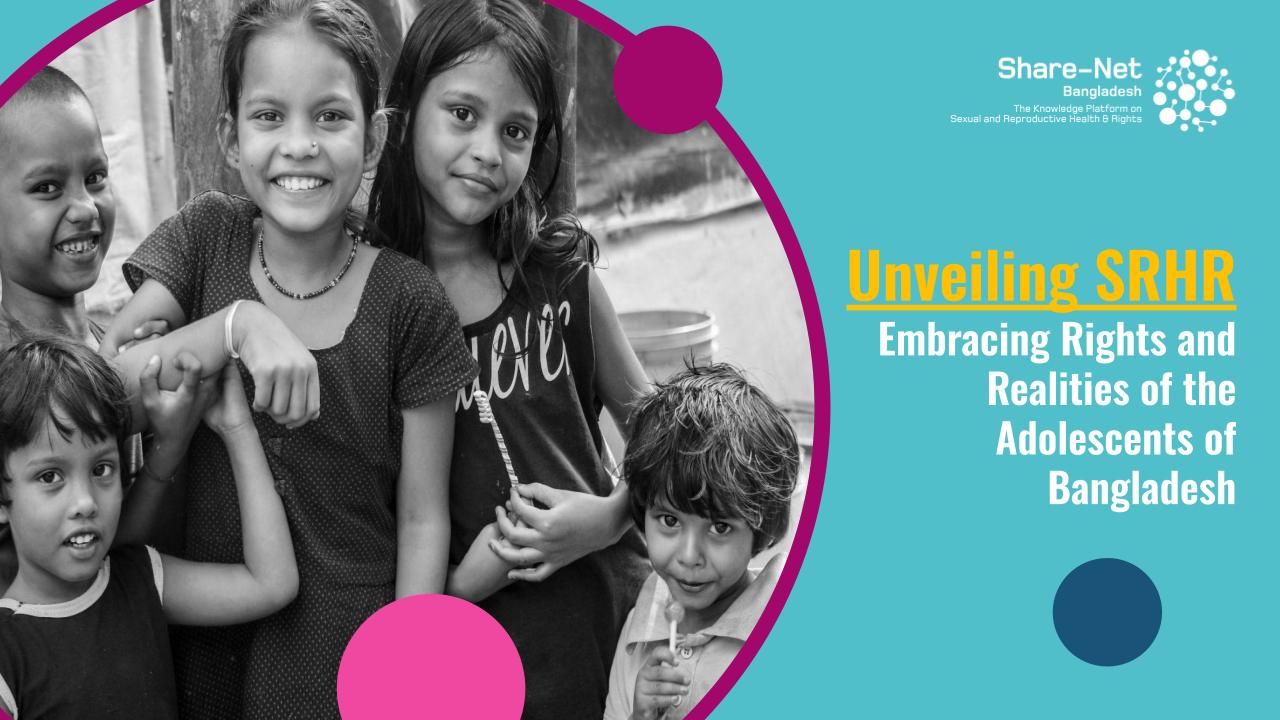Unveiling SRHR: Embracing Rights and Realities of the Adolescents of Bangladesh
No matter one’s age, gender, color, or other characteristics, sexual and reproductive health (SRH) embodies the fundamental right to control one’s sexual and reproductive aspects. Due to their lack of knowledge about puberty, sexuality, and the fundamental biological changes that take place, teenagers in Bangladesh confront a variety of difficulties when navigating their SRH. These problems contribute to increased incidences of early pregnancies, STIs, sexual violence, poor negotiating abilities, forced marriages, and high fertility rates.
The Government of Bangladesh is required to handle these issues due to the importance of this situation. With almost 36 million people, the adolescent population, who range in age from 10 to 19, makes up a sizeable share of the nation’s overall population. According to statistics, 52% of females marry by the age of 18, while another 18% marry by the age of 15. In addition, there are 113 births among teenagers for every 1,000 mothers. The government is aggressively attempting to promote the healthcare industry in an effort to improve teenage well-being. The extensive programs listed in the five-year plan for the years 2016–2020, which places a strong emphasis on sexual and reproductive health, serve as proof of this commitment.
Nevertheless, there are still some issues, notably with regard to young women’s sexual and reproductive health:
- There are no rules in the government plan for boys or unmarried girls.
- School schedules and the hours of Adolescent Friendly Health Corners (AFHC) conflict.
- LGBT and transgender youth are not included in the National Strategy for Adolescent Health.
- A lack of 10 to 14-year-old programs that are age-appropriate.
- Limited focus on Sexually Transmitted Infections (STIs), particularly HIV services.
To implement better management of adolescent SRH, some recommendations can be taken into account by the government:
The secondary education rate in 2018 was 72.69%, giving school health programs a great chance to engage many children. How? Community health professionals could drop by, chat, offer advice, give presentations, and lead workshops.
Let’s imagine a hip location where young people may discuss health and all connected topics in an open forum. Imagine working together to run this space with trained individuals and young girls. They might promote it on social media and host health events on holidays like Mother’s Day and International Women’s Day.
You know what else? There might be an online radio station dedicated to students. They would respond to inquiries regarding adolescent sexual and reproductive health (ASRH) anonymously, much like the wise owls.
Although growing up might be confusing, having the appropriate information makes it much simpler. Government-backed internet resources and routine visits from health professionals could be the superheroes that keep young people informed and inspired.
Source: The Daily Star



